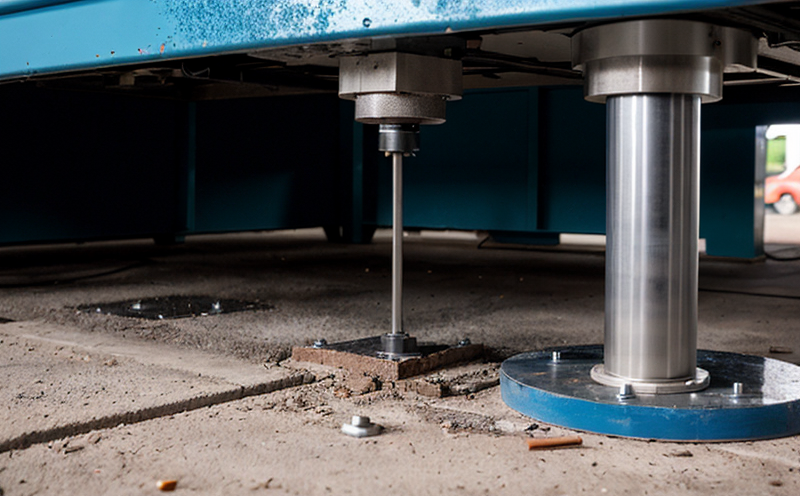ISO 15327 Residual Stress Analysis of Welded Joints
The ISO 15327 standard provides a comprehensive approach to quantifying residual stresses in welded joints. This testing method is crucial for ensuring the integrity and reliability of components subjected to welding processes, such as those found in aerospace, automotive, and manufacturing industries.
Residual stress occurs due to the thermal gradients during welding, which can lead to distortion and potential failure of the component if not properly managed. Understanding these stresses is essential for optimizing design and fabrication techniques, thereby enhancing product performance and safety.
The testing process involves several steps: first, the specimen must be prepared according to ISO 15327 guidelines, ensuring that it retains the residual stresses from the welding process. The method typically uses non-destructive evaluation (NDE) techniques such as X-ray diffraction, neutron diffraction, or neutron capture to measure stress levels within the material.
The results of this analysis are critical for quality assurance and compliance with industry standards. For instance, aerospace components must adhere to stringent residual stress limits to ensure they can withstand extreme conditions without failure. Automotive manufacturers also rely on accurate residual stress data to improve fuel efficiency and reduce emissions by optimizing component design.
In the context of manufacturing, ISO 15327 testing helps identify areas where stress concentration is likely to occur, allowing engineers to apply corrective measures such as heat treatment or post-welding stress relief. This not only improves product quality but also extends the lifecycle of components by reducing the risk of premature failure.
Moreover, this test provides valuable insights for research and development (R&D) efforts focused on developing new materials or welding processes. By understanding how residual stresses behave under different conditions, researchers can innovate more robust and efficient manufacturing methods.
The precision and reliability offered by ISO 15327 testing make it an indispensable tool in the quality assurance process. It ensures that products meet not only current standards but also future requirements as industries evolve. In summary, this test is pivotal for maintaining high-quality standards across various sectors where welding plays a critical role.
Why Choose This Test
Selecting ISO 15327 Residual Stress Analysis of Welded Joints ensures that your components meet the highest quality and safety standards. This test offers several advantages:
Precision in Measurement: Using advanced NDE techniques, this method provides highly accurate measurements of residual stresses within welded joints.
Compliance Assurance: By adhering to ISO 15327 standards, you ensure that your products comply with international quality and safety regulations.
Enhanced Reliability: Understanding and managing residual stresses can significantly enhance the reliability and longevity of components used in critical applications like aerospace and automotive manufacturing.
R&D Insights: This test offers valuable data that supports ongoing research and development efforts, helping to innovate more efficient and robust manufacturing processes.
Cost Efficiency: By identifying potential issues early through this analysis, you can avoid costly rework or component failures later in the production cycle.
Competitive Advantage and Market Impact
Incorporating ISO 15327 Residual Stress Analysis into your quality control processes can provide significant competitive advantages. Here’s how:
Enhanced Product Quality: By ensuring that residual stresses are managed effectively, you improve the overall quality of your products. This leads to higher customer satisfaction and loyalty.
Innovation Leadership: Understanding residual stress behavior allows you to lead in innovation, developing new materials and processes that set industry standards.
Regulatory Compliance: Adhering to international standards like ISO 15327 demonstrates your commitment to compliance, which can enhance your reputation with regulatory bodies and customers alike.
Cost Savings: Reducing the incidence of defects and failures through effective stress management translates into substantial cost savings throughout the product lifecycle.
Market Differentiation: Offering products that meet or exceed stringent quality standards can differentiate your offerings in a competitive market, attracting more customers and higher margins.
Use Cases and Application Examples
The ISO 15327 method is widely used across various industries where the integrity of welded joints is critical. Here are some specific use cases:
Aerospace: Ensuring that aircraft components can withstand harsh environmental conditions without failure.
Automotive: Enhancing fuel efficiency and reducing emissions by optimizing component design to handle residual stresses effectively.
Machinery Manufacturing: Improving the durability of machinery parts, especially those exposed to high temperatures and pressures during operation.
Bridges and Infrastructure: Ensuring that structural components are resilient against environmental factors like corrosion and temperature changes.
In each of these sectors, ISO 15327 testing plays a vital role in maintaining the integrity and reliability of welded joints. By applying this method, manufacturers can ensure their products meet the highest quality standards, thereby gaining a competitive edge in the market.





